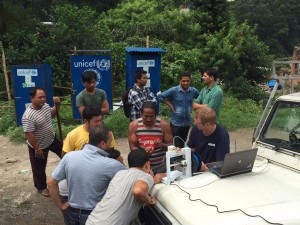In September 2015 Nepalese locals were astonished to find a little plastic device dared to regulate their way of life after terrible earthquake in May 2015. A small 3D printer was brought to the camp in Bahrabise, central Nepal, by Field Ready engineers to print and facilitate some essential equipment for 200 homeless families.
Being in the camp Field Ready specialists noticed that there were problems with plumbing system with leaking and badly patched pipes. It took only 45 minutes to design the needed water fittings on the laptop and two hours to get them printed.
“It’s that process of identifying the need, doing the design and then printing it out and fitting it out – and doing all that in less than 12 hours in a remote area. It’s a pretty important step forward, I think, for the use of this kind of technology.” said Andrew Lamb, member of the technology-focused NGO Field Ready.
Lamb hopes that 3D printing technology will be the essential part of emergency response teams in a few years. Because it is cheap enough (the printer Field Ready used in Bahrabise cost about $600), portable and can routinize the logistics of humanitarian aid. The potential financial savings can be impressive. Lamb provides the example with umbilical cord clamp, that cost in Haiti $1 while the real cost of it is 10 cent. The extra charge depends on logistics to transport the clamp from China to Caribbean. All these expenses can be avoided with 3D printer working on the disaster place.
The Nepalese experience wasn’t the first. In 2010 Field Ready worked in Haiti to print such products like mosquito-net closures, tools for aid workers and maternal cloths for earthquake victims. The most important problem was the lack of maternal health equipment in Haiti camps. The nurses and doctor had to improvise to find a way out. Finally Field Ready suggested a better solution with their 3D printers. The innovation reduced the risk of neonatal umbilical sepsis and simplified the work and life of many people there.
https://borgenproject.org/field-ready-uses-3d-printing-create-disaster-relief-supplies/
